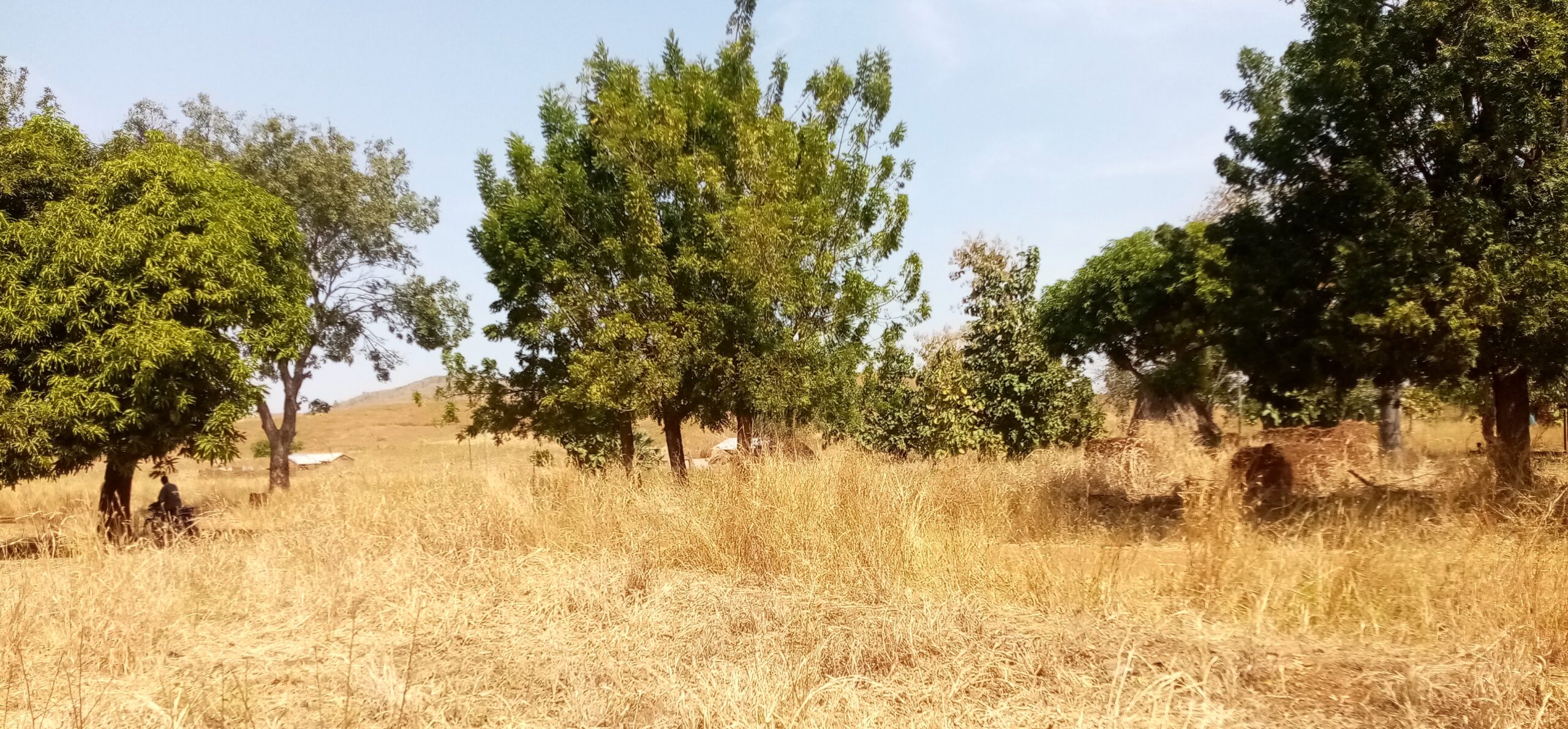
In Bawku, land donation from Ghanaian chief leaves a legacy for the future
In the far north of Ghana, the landscape is increasingly pressured by climate change. Seasons occur as they haven’t before, with prolonged drought now often followed by heavy flooding. The Sahel – a semi-arid region between the Sahara Desert to the north and lush tropical terrain to the south – is expanding southward into the country’s greener reaches.
“We don’t have a rainy a season anymore. It’s three months of rain and then nine months of dry season,” said Daniel Debrah, a forester who helped found Ghana’s GLFx Bawku chapter. Named for the town of Bawku in Ghana’s Upper East Region, GLFxBawku is a part of a Global Landscapes Forum (GLF) initiative to implement restoration activities in landscapes around the world. The chapter is so far one of five in the greater Sahel region, each funded by a EUR 5,000 grant from the Robert Bosch Foundation.
On top of the seed funding, the chapter received a major boost after a local chief, Puafadir Ziem Mon Naaba Alumbil, agreed to donate 3,200 square meters of his land for a tree nursery in the semi-arid Yarigungu community near Ghana’s northeast border with Burkina Faso.
The tree nursery on the donated land will sit on gently sloping ground that is well-drained and less than 500 meters from freshwater. Mango trees, neem trees and a mahogany tree are already on the site to provide shade and enable the tree seedlings to grow.
The Bawku chapter selected native species suitable for the soil, and the seedlings include more mahogany (Khaya), endangered rosewood (Pterocarpus erinaceus), the culturally significant baobab (Adansonia) – which also has an edible pulp – and shea (Vitellaria paradoxa), which contains a nut used to produce shea butter. Seedlings will also be distributed to the community to allow individuals to plant them near their homes.
Developed through a community consultation process, the restoration also aims to regenerate a landscape that has been badly depleted in the past two decades. Home to broad savannah grasslands and baobab trees, many areas of Upper Ghana have no tree cover due to unsustainable agricultural practices, bushfires, desertification, over-grazing and the clearing of trees for fuelwood and through controlled burning, which can spark bushfires given the dry conditions.
With the regional economy heavily dependent on agriculture and livestock, the landscape degradation and increasingly unpredictable weather have made agricultural livelihoods more uncertain. The global pandemic has also added to socioeconomic pressures, with many migrants returning home to their villages.
“There is a lot of tree loss across the landscape,” said Debrah. “Water is a serious problem, and food security is a big problem since it is difficult to grow rice, sorghum and millet.”
Ghana has already experienced one of the world’s highest rates of deforestation in recent years – much of it in the humid tropical forests in the south of the country. According to Global Forest Watch (GFW), the West African nation experienced the world’s highest increase in the rate of primary rainforest loss in 2018 compared to 2017. In 2020, GFW determined that Ghana lost 136,000 hectares of natural forest, equivalent to emitting 82.2 metric tons of carbon dioxide, based on remote sensing and satellite data from the University of Maryland.
Clearing for cocoa plantations, as well as road building, logging for mahogany and other trees, climate change and gold mining have all contributed to Ghana’s deforestation. One study cautioned that “at the current rate of deforestation, the country’s forests could completely disappear in less than 25 years.”
The GLFx Bawku chapter’s landscape restoration initiatives are part of a broader movement in Ghana to reverse this tree loss – one that has a ripple effect on human well-being and natural ecosystems. For example, the NGOs Green Republic and Youth Icons Ghana partnered to plant thousands of trees in the country. And as part of the AFR100 initiative, an effort to restore 100 million hectares of land in Africa by 2030, the Ghanaian government pledged the restoration of 2 million hectares. Across the continent, the African Union’s Great Green Wall initiative aims to restore and green the Sahel through tree plantings and other vegetation.
The donation of land in Bawku by Chief Alumbil also shows the level of restoration and innovation possible at the local level.
“When you plant a tree, you have given life and added property that will live into the future,” said Alumbil in a video commentary. “This is property no one will forget when they enjoy the tree’s shade or its fruit.”
In addition to tree plantings, restoration activities by the GLFx Bawku chapter will include training students and farmers on nursery development and compost preparation, establishing COVID-19 memorial plantings in schools and training students to become citizen scientists.
“The donated site will provide employment for five community members at the nursery and serve as a distribution center for tree seedlings to farmers for on-farm planting,” said Debrah. “The planting of trees helps strengthen the soil and also the people.”
